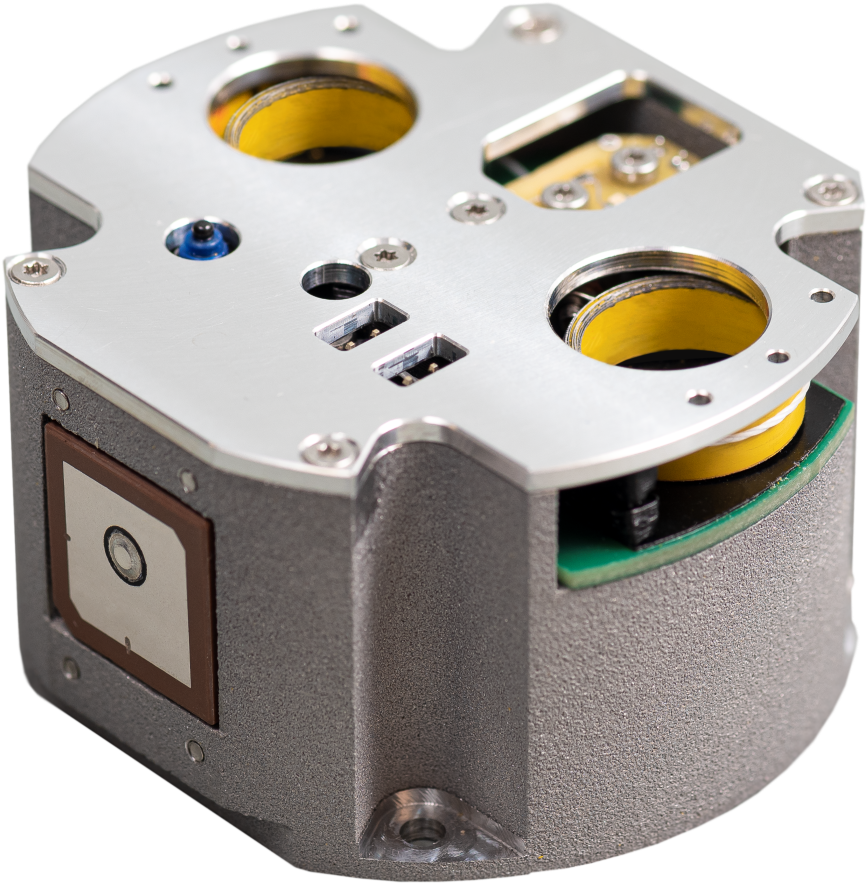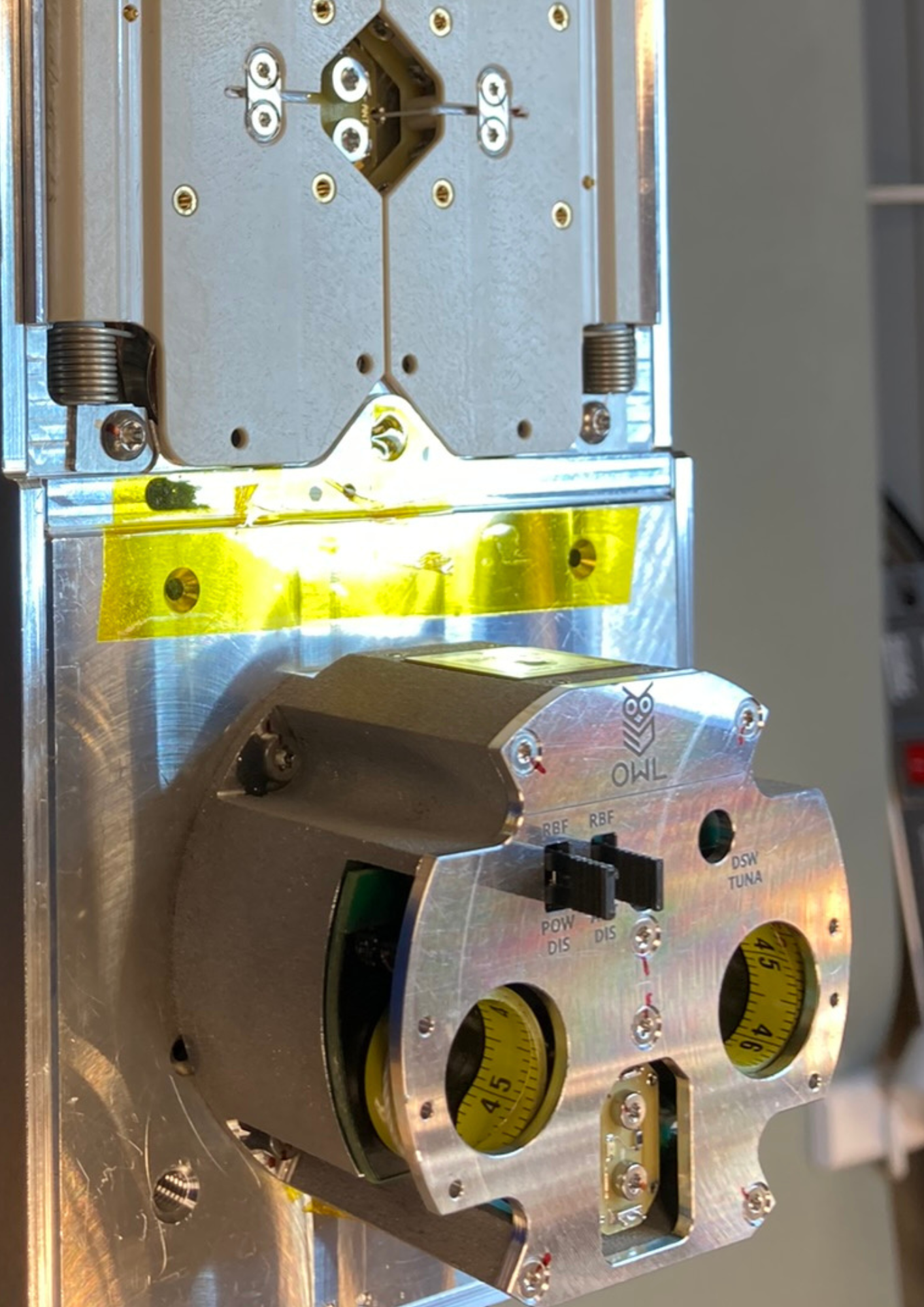Position and Identification Data in the Form of Short Messages via VHF
Developed through C3S’s ARTES open competition tender, OWL is a VHF transmitter designed for the “Tuna Can” segment specified by the CubeSat Design Specification. The sensor measurement frequency and beacon message frequency are configurable. It is easy to integrate and operates autonomously, with features like a built-in battery and a self-deploying VHF antenna. Mechanical integration is achieved with 4 screws. To ensure independent operation from the host satellite, deployment detection from the POD can be achieved through either a satellite-OWL electrical interface or mechanical actuation of the integrated switch in OWL by the POD. Power and signal interfaces between the satellite and OWL module are isolated for error prevention.
Technical Parameters
- Mass less than 130 g
- Dimensions 59x64x36 mm
- It comes with an integrated GNSS module, battery, and an optional dosimeter
- Based on the RILDOS standard and HiRal module
- It can independently measure TID and per-axis angular velocity


“Satellite within a Satellite” Concept
With advanced autonomous operation and computing capabilities, the OWL is a self-contained, platform-independent system that effectively operates on the “satellite within a satellite” principle. The OWL includes its own power supply system (EPS), communication (COM) subsystem, and onboard computer (OBC). These developments are made possible through the integrated solar panel, which provides all the necessary power for the system.
More Details
Space segment
OWL-EPS
OWL-EPS handles the power supply, supervising the module’s built-in battery, providing approximately 1 day of operation. It interfaces with the host satellite for external power input and offers a wide voltage range (3-16.8V) for easy connection. The EPS also distributes energy to OWL’s subsystems through current-limited switches, ensuring current limitations even in case of OWL failures.
OWL-COM
OWL-COM manages RF communication with Earth, transmitting beacon frames. It comprises a self-unfolding V-dipole antenna made from steel strips, an RF power amplifier, and a communication chip. It uses LoRa modulation, which is compatible with various customer-side devices, and enables reception even for ground stations with low transmitter power and lacking rotating antennas. The system is designed to function with low-gain ground station antennas sensitive to the entire sky.
OWL-OBC
OWL-OBC manages the following tasks through a single microcontroller:
- Gathering up-to-date data from the GNSS module, Total Ionizing Dosimeter (TID), and Inertial Measurement Unit (IMU).
- Assembling beacon frames for transmission by the COM.
- Initiating antenna deployment after successful space deployment.
OWL-WDT
OWL-WDT, the watchdog module, serves two critical functions:
- Preventing the embedded system from becoming unresponsive due to software failures.
- Safeguarding against non-destructive failures in OWL-EPS, like latch-ups, that could otherwise cause OBC shutdown.
Ground segment
The Ground Segment consists of multiple omnidirectional VHF Ground Stations (GS) that receive signals from the OWL and transmit data to the Mission Operations Center (MOC), which manages all GSs, processes the beacon data, and provides satellite operators with orbit determination services, spacecraft orbital element sets, and ancillary data.
Get a Quote
Wish to be connected to your satellite? Please contact us and we will get back to you soon.

